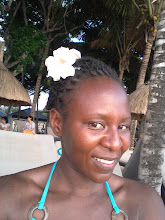This morning i did E2 blood test which still show the high levels, Dr J decided that we must cancel the IVF. My heart was so sore it was like something has been riped out of my chest, I really lost it infront of Dr J.
The main reason why dr J decided to cancel the IVF is because i am at risk of having OHSS after the ER. I google OHSS and found this info
Symptoms
Symptoms are set into 3 categories: mild, moderate, and severe and some others. Mild symptoms include abdominal bloating and feeling of fullness, nausea, diarrhea, and slight weight gain. Moderate symptoms include excessive weight gain (weight gain of greater than 2 pounds per day), increased abdominal girth, vomiting, diarrhea, darker urine and less in amount, excessive thirst, and skin and/or hair feeling dry (in addition to mild symptoms). Severe symptoms are fullness/bloating above the waist, shortness of breath, urination significantly darker or has ceased, calf and chest pains, marked abdominal bloating or distention, and lower abdominal pains (in addition to mild and moderate symptoms).
Classification
In mild forms of OHSS the ovaries are enlarged, in moderate forms there is additional accumulation of ascites with mild abdominal distension, while in severe forms of OHSS there may be hemoconcentration, thrombosis, abdominal pain and distension, oliguria (decreased urine production), pleural effusion, and respiratory distress. Early OHSS develops before pregnancy testing, and late OHSS is seen in early pregnancy
Complications
OHSS may be complicated with ovarian torsion, ovarian rupture, thrombophlebitis and renal insufficiency. Symptoms generally resolve in 1 to 2 weeks, but will be more severe and persist longer if pregnancy is successful. This is likely due to the role of the corpus luteum in the ovaries in sustaining the pregnancy before the placenta has fully developed. Typically, even in severe OHSS with a developing pregnancy, the duration does not exceed the first trimester.
Pathophysiology
OHSS is characterized by the presence of multiple luteinized cysts within the ovaries leading to ovarian enlargement and secondary complications.
As the ovary undergoes a process of extensive luteinization, large amounts of estrogens, progesterone, and local cytokines are released. It is held that vascular endothelial growth factor (VEGF) is a key substance that induces OHSS by making local capillaries "leaky", leading to a shift of fluids from the intravascular system to the abdominal and pleural cavity. Thus, while the patient accumulates fluid in the third space, primarily in the form of ascites, she actually becomes hypovolemic and is at risk for respiratory, circulatory, and renal problems. Patients who are pregnant sustain the ovarian luteinization process by the production of hCG.
Epidemiology
Sporadic OHSS is very rare, and may have a genetic component. Clomifene citrate therapy can occasionally lead to OHSS, but the vast majority of cases develop after use of gonadotropin therapy (with administration of FSH), such as Pergonal, and administration of hCG to trigger ovulation, often in conjunction with IVF. The frequency varies and depends on patient factors, management, and methods of surveillance. About 5% of treated patients may encounter moderate to severe OHSS.
Mortality is low, but several fatal cases have been reported.
Treatment
Physicians can reduce the risk of OHSS by monitoring of FSH therapy to use this medication judiciously, and by withholding hCG medication. Once OHSS develops, reduction in physical activity, closely monitoring fluid and electrolyte balance, and aspiration of accumulated fluid (ascites) from the abdominal/pleural cavity may be necessary, as well as opioids for the pain. If the OHSS develops within an IVF protocol, it can be prudent to postpone transfer of the pre-embryos since establishment of pregnancy can lengthen the recovery time or contribute to a more severe course. Over time, if carefully monitored, the condition will naturally reverse to normal - so treatment is typically supportive, although patient may need to be treated or hospitalized for pain, paracentesis, and/or intravenous hydration
My ovaries are still producing eggs even though i stop with the medication on Wednesday. Here is the breakdown of
Monday 10 follicles
Wednesday 14 follicles
Friday 16 follicles
Saturday 20 follicles
I used 4 amps of menopur per day for 10 days.
To think that i went throught this , for nothing all i am left with is painful ovaries. And to top it all about R10 000.00 down the drain. This is really not fair.
The New Phase of Embryo Biopsy and PGD
13 years ago

2 comments:
I'm so sorry Emmah! I really is so unfair but nothing about infertility is ever fair. I know your heart must be broken right now.
(((Hugs)))
Post a Comment